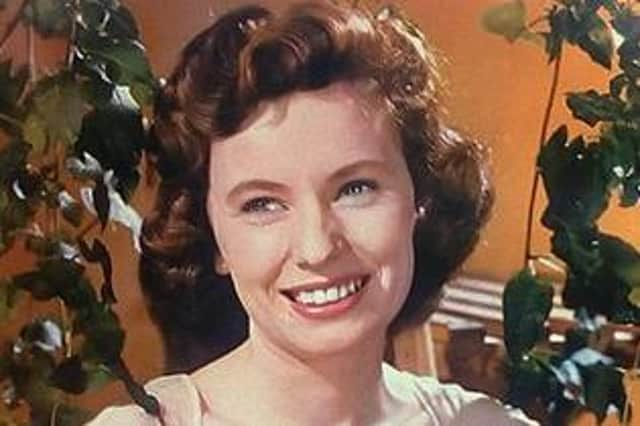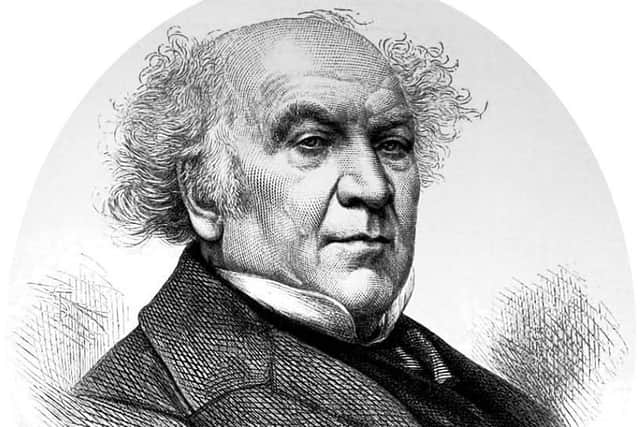The pair of Ulster-Scots Murrays who left their marks on the world


This month marks the 150th anniversary of the death of Sir James Murray and the 25th anniversary of the death of Ruby Murray.
Apart from a shared surname what do these two very different individuals from different centuries, with very different achievements to their credit, and different religious backgrounds have in common?
Advertisement
Hide AdAdvertisement
Hide AdBoth made an impact on the world, both were of Ulster-Scots descent and both are commemorated by Ulster History Circle blue plaques.


Born into a Roman Catholic family in 1788 in Culnady, near Maghera, in Co Londonderry, James Murray was the eldest son of Edward Murray and Belinda Murray (née Powell). One of his brothers became the parish priest of Skerries in north Co Dublin.
In 1807, at the early age of 19, he became a licentiate of the College of Surgeons in Edinburgh and the same year he started work as an apothecary to the Belfast Dispensary and Fever Hospital. In 1807 he was also admitted as a member of the Dublin College.
He also set up his own practice in High Street, although he may have started up originally in Winetavern Street. In 1809 he married Mary Sharrock. They had two boys who died young and were buried in Clifton Street graveyard and two boys who survived.
Advertisement
Hide AdAdvertisement
Hide AdHis career flourished under the patronage of the Marquess of Donegall, the proprietor of Belfast.
During this time, he experimented with electrical apparatus, and, in about 1809, he developed Murray’s Fluid Magnesia.
Ultimately marketed as Milk of Magnesia, it was sold as a palatable laxative and a remedy for acidities, indigestion, heartburn, and gout.
During his research Murray also discovered that the by-products created when making his stomach remedy included sodium, potassium bicarbonates and silicates. He treated them with sulphuric acid and invented artificial fertiliser. In 1817 Murray conducted trials to develop and produce the artificial fertilisers we know today.
Advertisement
Hide AdAdvertisement
Hide AdAnother turning point in his career came in 1829. The Lord Lieutenant of Ireland, the Marquess of Anglesey, was visiting the Marquess of Donegall in Belfast when he was suddenly taken ill, and Murray was able to cure him.
Anglesey was so grateful that he appointed James as his resident physician and James moved to Dublin where he built up a very successful and lucrative practice. Over the next decade he served three lord lieutenants and was knighted.
James Murray obtained the MD of Edinburgh University in 1829 and in 1832 he was awarded an honorary MD from Dublin University.
Murray was Ireland’s first inspector of anatomy following the passage of the 1832 Anatomy Act, which legalised the supply of cadavers to teaching hospitals and ended the practice of body snatching.
Advertisement
Hide AdAdvertisement
Hide AdSir James died at Upper Temple Street, Dublin, on December 8 1871 and was buried at Glasnevin.
He is commemorated by an Ulster History Circle blue plaque at 16 High Street in Belfast.
Murray Street, beside ‘Inst’, also perpetuates his name. A successful property developer as well as a physician, he was responsible for the street’s development.
Ruby Florence Murray was the 1950s singing sensation who brought great fame and distinction to her native city.
Advertisement
Hide AdAdvertisement
Hide AdRuby was born on March 29 1935 and was the youngest daughter of four children of Daniel Murray, a Scot living in Belfast, and Wilhelmina or Winifred Murray (née Connolly).
The family lived in Moltke Street, off the Donegall Road. Ruby attended Fane Street School.
An operation on her throat due to swollen glands when she was a baby left her with a husky but unique, very appealing, and melodic voice.
She made her earliest appearances in amateur concerts presented by her father in the Ulster Hall in Belfast, and toured Ulster as a child in variety shows.
Advertisement
Hide AdAdvertisement
Hide AdRichard Afton, a well-known television producer, spotted her and she made her broadcasting debut at the age of 12. However, she was too young to embark on a career in show business.
Aged 19, in 1954 she went to London in a touring revue, ‘Mrs Mulligan’s hotel’. Alton encountered her again at the Metropolitan Theatre, Edgware Road, and recognised that her youth, charm and talent were a winning combination.
He had no hesitation in offering her a position as resident singer on BBC Television’s ‘Quite Contrary’.
Such was the impact of her first appearance on the show that she signed a recording contract with Columbia Records. Her second release, ‘Heartbeat’, rose to number 2 in the UK chart in early February 1955.
Advertisement
Hide AdAdvertisement
Hide AdThe same month her next release, ‘Softly, Softly’, a love ballad, which became her signature tune, went straight into the chart at number 4. It reached number 1 a week later. Within a few weeks, and she had five singles in the Top Twenty simultaneously, an achievement equalled only by Elvis Presley, and by Madonna in the 1980s, but not yet surpassed.
In November 1955 she was voted favourite female vocalist by the readers of New Musical Express, a thousand votes ahead of Alma Cogan and she polled 12 times as many votes as Petula Clark.
In 1955 she also released the LP ‘When Irish Eyes Are Smiling’. Murray’s hits included ‘Let Me Go, Lover’, ‘If Anyone Finds This, I Love You’ (with Anne Warren), ‘Happy Days And Lonely Nights’, ‘Evermore’, ‘I’ll Come When You Call’, ‘Real Love’, ‘Little White Lies’ (1957), ‘Goodbye Jimmy’ (1959), and ‘You Are My First Love’, which she sang over the opening titles of the 1956 film musical ‘It’s Great To Be Young’. With the Norrie Paramor Orchestra she recorded the singles ‘My Little Corner Of The World’ and ‘I’ll Remember Today’.
Ruby died on December 17 1996 in Torquay.
In March 2006 Belfast City Council unveiled a plaque in the Ulster Hall, the venue of so many of her earliest performances.
Advertisement
Hide AdAdvertisement
Hide AdOn February 15 2019 Tim and Julie Murray unveiled an Ulster History Circle blue plaque commemorating their mother on the Greater Village Regeneration Trust (GVRT) building at 337 Donegall Road, not far from Ruby’s birthplace.
Ruby’s popularity led to her name being adopted in Cockney rhyming slang for curry.